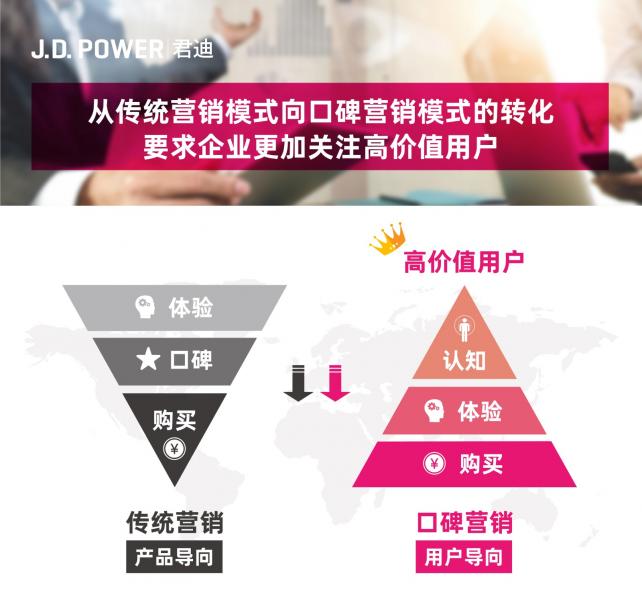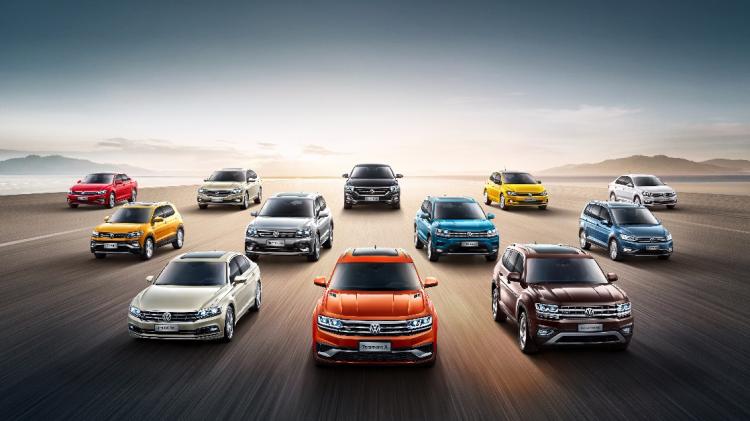In today’s world of comprehensive and transparent information and severe homogeneity of products, good user experience has become an important means to enhance the core competitiveness of enterprises, and it is also a huge challenge faced by many enterprise managers. Digital user experience is one of the hottest topics at the moment. Both traditional companies and Internet companies are actively exploring innovative solutions and specific measures to improve users’ digital experience, better create value for users, and ultimately realize the benign and sustainable development of enterprises. Ongoing development.
Not long ago, JD Power, the world’s leading consumer insight and market research organization, officially released the 2019 China Auto Sales Satisfaction Study (SSI) and China Auto Service Satisfaction Study (CSI). Among these two important research findings, digital user experience has become the keyword with the highest frequency. At the site of the research release and awards ceremony, Ren Hongyan, vice president of digital customer experience of JD Power China, made a professional and profound interpretation of the “users” in the current market, in order to solve user problems, meet user needs, create enterprise value, and create user value As four measurement dimensions, it defines what is a perfect “digital customer experience”.
Target high-value users to achieve sustainable development
In the era of digital experience, the marketing model is gradually shifting from product orientation to user orientation. The traditional marketing method is product-oriented. The company first conducts large-scale media promotion according to the characteristics of the product, so as to attract some users who receive the promotion information to experience it, and then convert a small part of them into end users. Therefore, the entire cycle The marketing model is an inverted triangle.
In the new marketing model, that is, the word-of-mouth marketing model, companies precisely develop products and services based on the needs of target user groups, attract high-value users to experience and generate word-of-mouth effects, and then increase product influence at an exponential rate of fission, and promote more The awareness and purchase transformation of many people presents a regular triangle marketing model.

The transformation from the traditional marketing model to the word-of-mouth marketing model requires companies to pay more attention to high-value users
The values of high-value users and their demands for products and services usually better match the strategy of the enterprise. Therefore, understanding these high-value customers and capturing their hearts is the top priority of enterprise development. High-value customers are characterized by actively embracing changes, pursuing inner satisfaction and joy of life, and emphasizing resonance of values and communication of emotions. They are willing to spend their time and money on good things and will not follow the crowd. This part of users can promote the continuous progress of enterprise product service research and development, cultivate brand user groups, and maximize the word-of-mouth effect.
In the 2019 JD Power Automobile Sales Satisfaction Study and After-sales Service Satisfaction Study, a total of nearly 60,000 users participated in the survey. According to the screening of words, about 12% of the users meet the characteristics of “high-value customers”.
From the statistical data, the per capita annual consumption of high-value users is 2752 yuan, while that of ordinary users is 2294 yuan. In addition, high-value users are more willing to purchase value-added services than ordinary users. According to the survey by JD Power, 77% of high-value users are willing to purchase extended warranty services, which also provides more opportunities for the after-sales service market.
In terms of satisfaction and recognition of authorized channels, high-value users scored 7.73 points for the service experience of 4S stores and official channels, and ordinary users scored 7.06 points. It can be found that high-value users pay more attention to the original brand and agree more with quality-assured services.
In terms of word-of-mouth effect, that is, the Net Promoter Score, the recommendation rate of high-value users is 32%, while that of ordinary users is only 7%. Although there is a large difference between the two values, the NPS of some Internet companies with better customer experience can reach 80%, so the NPS of the entire auto industry still has a lot of room for improvement.
Through the above data, it is not difficult to find that high-value customers have significantly higher demands than ordinary users in terms of quality, humanistic care and efficiency. They are high-quality assets to help enterprises achieve sustainable development. To meet the quality needs of high-value users, while improving service efficiency and creating a service experience of humanistic care, the stickiness, loyalty and reputation of high-value users will come naturally. What high-value users contribute to the enterprise is not only the benefit of purchase, but also the user support, user information and word-of-mouth effect of related transactions they bring, which will provide the enterprise with more long-term influence and value.
Improve slots and enhance user perceived value
From JD Power’s user perceived value formula, user perceived value is equal to user perceived benefit minus user perceived cost. When the user-perceived cost is relatively stable, if the user-perceived benefits can be improved, technology can be used to provide customers with touching and personalized services, and the user-perceived value can be enhanced, and it will be natural for users to pay for products and services.
JD Power 2019 Auto Sales Satisfaction Research (SSI) and Automobile Service Satisfaction Research (CSI) also found that customers will not buy because they are satisfied with the service, but they will refuse to buy because they are not satisfied. In the whole sales process, dissatisfaction caused by any links such as pre-sales consultation, on-site reception, test drive, and bargaining will affect the customer’s decision to buy a car. Among the sample population who participated in the study, 15% decided to buy a car because of the good car buying experience in the dealership; and 44% of the reasons for deciding to abandon the purchase were related to the salesperson and the dealership.

Customers will not buy because they are satisfied with the service, but will refuse to buy because they are dissatisfied
Among the factors of comprehensive customer dissatisfaction, the complaints focus on four aspects at most:
One is to set standardized services as service standards. The staff should not provide mechanical and streamlined service processes, and the same sales service is often synonymous with unprofessional and inconsiderate. The service experience required by each customer is quite different, and the demand for service content is different. The staff should provide personalized services according to the actual needs and preferences of customers, so that customers can feel respect and understanding during the service process.
The second is the price bargaining process. The uncertainty of the price bargaining results and the concerns about the possible reduction in service levels make many customers feel that this process is time-consuming, laborious and tortured. If the customer does not feel the increase in perceived benefits, his perceived value will decrease, resulting in sales failure and customer loss. Therefore, enterprises should re-plan customer time in the entire service link, and focus time on improving customer perceived value.
The third is that customers are not satisfied with the service before entering the store. According to the 2019 JD Power China Automobile Sales Satisfaction Research Data, 26% of customers have decided to give up buying before entering the dealership, which is the so-called failure before fighting. When consumers are still in the stage of understanding the product, distributors should give consumers substantive suggestions and guidance instead of blunt sales words, so as to increase consumers’ motivation to enter the store.
Fourth, the gap in online and offline information reduces customer experience satisfaction. For example, appointment information that has been submitted in the APP will be required to submit again after arriving at the dealership. Digital technology and tools are just a means. How to realize the seamless integration of touch points, accounts and data from the perspective of customer experience is the truly humanized service.
Digital services require vertical and horizontal integration capabilities
It can be seen that digital user experience is a user experience that runs through the entire user life cycle, and requires comprehensive integration and in-depth integration from pre-sales to after-sales, online to offline. In the traditional sales model, companies often focus on the car, while ignoring the user’s service experience. When the market is in a period of rapid growth, customers may not pay much attention to service quality and experience, and are willing to endure simple and rough services and even choose to add money and queue up to buy cars. However, when the current market situation is turning downward, enterprises must not only stick to quality, but also pay attention to the improvement of customer service experience. Only in this way can enterprises remain invincible in adversity.

JD Power’s digital user experience and solutions will help car companies complete digital transformation
In an era centered on user experience, enterprises need insight into people’s needs, tailor-made service systems based on users’ needs, provide differentiated services that vary from person to person, and need to have the ability to refine operations. In this process, technological means are indispensable, but what is more important is to start from the heart and start from the subtleties to provide products and services that meet the needs of users. This is also the vision of JD Power’s digital customer experience business – through insight into consumers’ full life cycle appeals, to understand consumer needs from different aspects, and to design differentiated and humanized solutions to change users’ perceptions of products and services. JD Power also hopes to provide more digital tools and platforms to help companies discover, track and solve problems on the premise of gaining insight into user needs, and work with companies to create a better digital customer experience for consumers.




